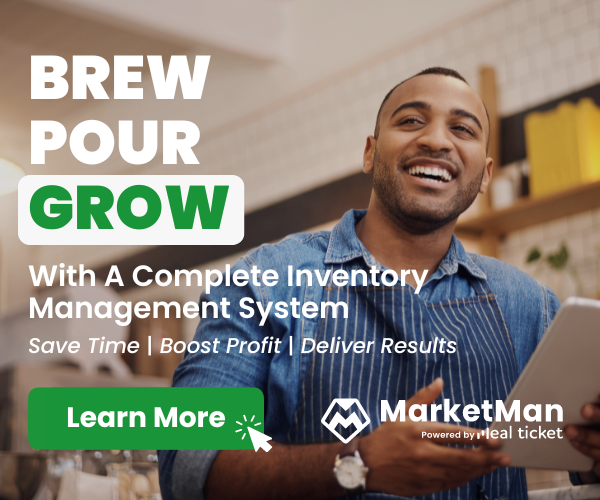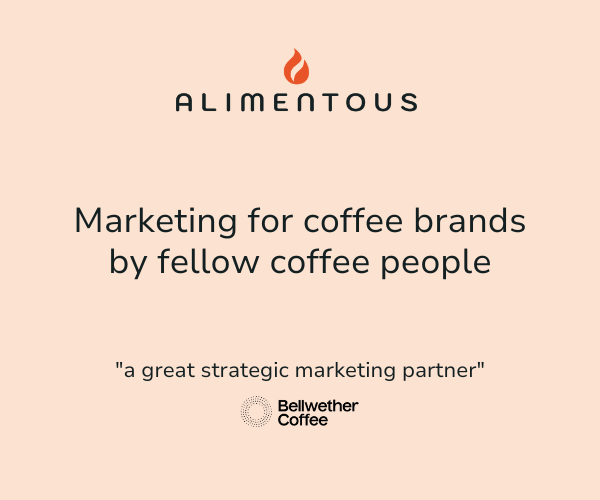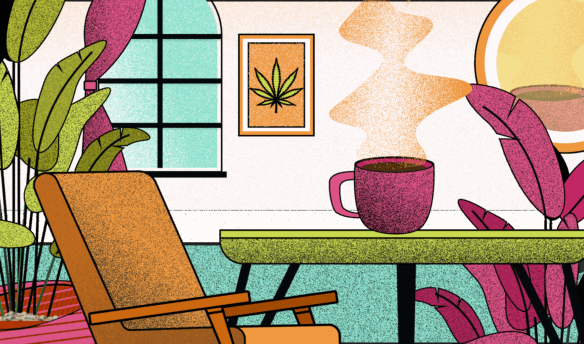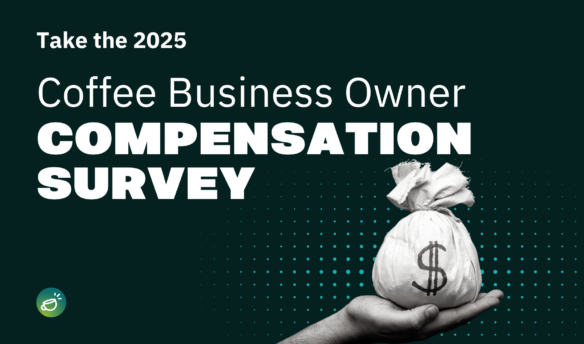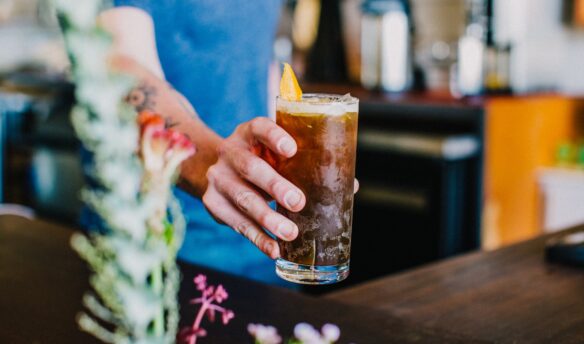The coffee industry is having an identity crisis.
Great coffee—once considered the exclusive domain of specialty cafes and high-end roasters—has become wonderfully available. But this democratization begs the question: What happens when quality alone is no longer a differentiator? It’s a particularly thorny question as the industry faces its most challenging economic headwinds in recent memory (hello, $4+ C-market), all while the whiplash risk of tariffs sows doubt about the U.S.’s predictability as a trading partner.
To understand how coffee businesses are navigating what has already been a turbulent year, we asked leaders across the industry—including roasters, coffee shop owners, consultants, and other longtime professionals—to share the emerging trends they see unfolding ahead.
Their insights paint a picture of an industry being forced to evolve, where success increasingly depends not on how well you can roast and brew coffee but on how creatively you can adapt to change. Here’s what our experts say coffee businesses should be watching out for, for the rest of 2025.
Hey, we want to hear from you, too! Submit your emerging trend hot take.
The End of Easy Money Will Force a Return to Business Fundamentals
Martin Mayorga, Founder, Mayorga Coffee
Reality is coming home to roost for the coffee industry. Many players emerged during low-interest, easy-money, low-C-Market years. During those times, raising funds was easier, thanks to excited investors or very cheap loans. Margins were unrealistically high, and roaster expectations were simply not sustainable.
As 2025 continues, we will unfortunately see many coffee companies either go out of business or be acquired opportunistically. They will not be able to raise prices high or fast enough to enjoy their incredibly high margins. Those that survive will do so by understanding the real needs of the consumer, and delivering excellent products at a fair price.
It’s time to run very disciplined businesses, define what your brand/company offers to the market (and what makes you distinct and unique), and learn to play the long game. This year will make plain who is a strategic and disciplined operator, one who can balance growth with fine-tuning the business model.
In 2025, Coffee Excellence Is All About the Human Touch
Chris Deferio, Owner, Keys to the Shop®
With an increasingly saturated market, customers have the ability to get decent coffee in countless places, and in seemingly endless mediums. In order to offer value beyond caffeine delivery, cafes are increasingly focusing their energy on service and hospitality experiences as the main differentiators that retain customers and grow their businesses.
In order to lean into this opportunity while also remaining profitable at a time when costs of goods and labor are rising dramatically, these operators will need to invest their income less in expansion and more in leveling up their cafe’s efficiency. Most importantly, they’ll need to elevate their hiring standards to operate with a small, well-chosen, well-compensated, and highly resourced team.
We are now in a world where technological innovation is not as necessary as when it was solving major problems in the daily work of a cafe. Now that we have such great coffee, tools, and resources available through technological advances and connectivity, we are increasingly turning our attention to how we serve people and community through coffee.
Coffee Brands Are Trading Professionalism for Lighthearted Personality
Abbey Chiavario, Owner/Barista, Matryoshka Coffee
2025 is the year for unhinged marketing tactics and the personification of brands.
You can see this trend across the board, from the hyperpop duo 100 gecs to corporations like McDonald’s embracing niche internet culture in their marketing campaigns. In many ways, a too-serious, professional brand is now seen as stuffy and uninviting—and in an often-intimidating industry, that type of presence will increasingly be seen as a turn-off. Instead, I think we’ll see a lot more brands embrace their unserious sides in menu development, merch creation, and marketing. This will be especially effective for brands that haven’t traditionally gravitated toward silliness in the past.
I think, in this same vein, we’ll continue to see brands behaving more casually, communicating like a longtime friend on the internet rather than a professional acquaintance. This will come in various forms, like sharing highly personalized copy and inside jokes with their customer base, communicating more openly and frequently online, and using imperfect grammar.
Personally, I think it’s time we embrace the lighthearted humanity of customer service in fun and silly ways. We can offer a top-tier product while still extending our true and weird selves across the bar to our customers. At the end of the day, we’re all strange little people looking for connection in big and small ways, and I think that creating a less serious environment allows the barrier to connection to be just a little bit lower.
The Twin Imperatives: Higher Prices and Environmental Progress
Michael Craig, Owner, Creature Coffee
There are big hopes, dreams, and goals for 2025 here at Team Creature Coffee! Outside of our colorful bubble of coffee fun, here are my two hot takes for the specialty coffee industry this year:
First, prices have to go up. We’ve been saying this for years, but maybe 2025 is the year the coffee industry will finally shift towards sustainable pricing models that benefit the entire supply chain and consumers. Transparency and education are key for the consumer during this transition.
Second, eco-friendly practices—such as zero-waste packaging and carbon-neutral shipping—will keep pushing forward, becoming cheaper and more accessible for all businesses to adopt. That is my hope!
Latin America’s Coffee Industry Is Breaking Free From U.S. Dependency
Sandra Loofbourow, Educator/Consultant, Loupe Coffee Consulting
The immigration crisis and impending trade war are forcing Latin American countries to face a common enemy together. In the coming years, Latin America will become less dependent on the U.S., resulting in stronger relationships within the region and more reliance on European and Asian markets to replace U.S. sales.
Considering that South America alone produces almost 50% of the world’s coffee—not to mention its other agriculture and mining industries, and additional key exports—these changes in our diplomatic and economic relations will lead to more scarcity and higher prices for the coffee sector. I am hoping that these changes can also result in increased incomes for producers, pushing the market towards financial sustainability. But that is not guaranteed.
Looming Tariffs Could Reshape the Equipment Market
Mark Prince, Senior Editor, CoffeeGeek
Looking ahead to the rest of 2025, my main concern is the potential fallout if President Trump follows through on tariff threats. If, after the 90-day pauses, they go ahead as planned, this could trigger a significant rise in prices for consumers and businesses alike in the coffee industry. After speaking with several importers and manufacturers, it’s clear they see this as a looming issue. Some are already stockpiling inventory, aiming to weather the possible storm ahead. Those who haven’t may really suffer by not doing so.
We’ve already witnessed sharp increases in consumables—specialty coffee prices have climbed by 75% or more since pre-pandemic days. However, the cost of machines and equipment has largely remained stable and, in some cases, even decreased. The pandemic-driven surge in demand for espresso machines, grinders, and accessories like tampers and milk pitchers helped stabilize and even reduce prices. Consumers have grown accustomed to affordable options, including quality grinders in the $150–$250 range and entry-level espresso machines priced between $300 and $500. Currently, these price points feel far more accessible to consumers than they did in 2018.
But if the proposed tariffs are implemented, retail prices could surge by 30–50%. A $300 entry-level espresso machine could jump to $500, while premium $2,000 machines might soar to $3,000 or more. This would create a domino effect, as each link in the supply chain—manufacturers, importers, and vendors—adjusts for the tariffs’ impact.
Such dramatic price shifts could devastate the coffee market, with severe economic consequences. I’m no economist, but I know consumer expectations and demands, and I know this industry. It simply cannot sustain such rapid, widespread increases without significant job and income losses in 2025.
Trusted Brands Can Help Navigate Price Increases
Russ Prefontaine, President, Fratello Coffee Roasters
2025 is continuing with most conversations in the coffee industry—and all over the media—around skyrocketing coffee prices. This has placed significant pressure on roasters, retailers, and cafes, forcing them to reevaluate pricing strategies. As we head deeper into 2025, the challenge is not just increasing prices but doing so in a way that resonates with customers.
One key strategy is aligning with trusted brands that carry perceived value. Consumers are increasingly willing to pay more for products and experiences that align with quality, sustainability, and authenticity. Partnering with established, reputable brands in both retail and cafe settings can make the transition to higher prices smoother, as customers recognize the value behind the product.
Trusted brands bring more than just recognition—they also offer built-in marketing, consistent quality, and a story that resonates with modern shoppers. In cafes, emphasizing relationships with respected coffee roasters or premium product suppliers allows operators to showcase the value customers are receiving by the cup.
For retailers, showcasing well-known brands instead of private labels can additionally justify shelf prices by highlighting the craftsmanship, ethical sourcing, and expertise behind the product. Investing in customer education and transparent storytelling about the quality and origin of the coffee can further strengthen this strategy, helping to maintain loyalty even in the face of rising prices.
When prices must rise, the story behind the product matters more than ever. Trusted brands can help bridge the gap, turning price increases into opportunities to deepen connections with consumers.
The Automation Revolution Is No Longer Optional
Sarah Palmer, Co-Founder & Chief Growth Strategist, JCS Strategy Group
Rising costs across the board are making automation a necessity for coffee businesses in 2025. More operators are investing in automated equipment for brewing, grinding, milk steaming, and order fulfillment to improve efficiency and reduce labor dependency. As quick-serve drive-thrus continue to grow, independent shops must compete by optimizing speed, consistency, and workflow integration.
At the same time, tracking data on equipment performance, ingredient usage, and order efficiency is becoming even more critical for controlling costs and staying competitive. The businesses that fully integrate automation into their operations will be best positioned to succeed.
The Great Coffee Business Handoff Is Coming
Luke Waite, Principal Consultant, Pomelo Coffee Consulting
The late ’90s into the mid-2000s was a heyday for emerging specialty roasters, such as Intelligentsia, Stumptown, and Blue Bottle. As a result of the collective success of these roasters, a new generation of coffee roasters, cafes, and other coffee-adjacent businesses sprang up in the mid-to-late 2000s.
The owners who started their businesses 10 to 20 years ago have now matured, and are planning their successions or seeking outside acquisitions.
As a result, I have seen a surge in small-to-medium-sized coffee businesses seeking to acquire roasters. I’ve also seen coffee-related businesses grow their portfolios, either to become more attractive acquisitions or to be better positioned for their successions.
2025 will be a year of transition, succession, and acquisition.
Cold Coffee and Single-Serve Options Are Having Their Moment
Anne Djerai, CEO, Metropolis Coffee Company
I firmly believe cold coffee extract and more planet-friendly single-serve options are the wave of the future, not only because they don’t require expensive and fickle equipment, but because the industry is finally making these products taste good.
“Coffee hacks” are becoming mainstream, and gone are the days of needing to fit consumer preferences into a limited specialty coffee archetype. Solution-based and easy-to-use coffee formats for wholesalers, retailers, and at-home consumers will continue to grow in 2025, and they’re going to be better than ever.
I am excited to see less waste, more consistency, and greater creativity in all facets of the coffee industry this year. With the price of coffee increasing drastically overnight, folks will be looking for alternatives to their whole-bean products and willing to try new things.
We’re At Risk of Losing What Makes Coffee “Specialty”
Ashley Rodriguez, Editor, Fresh Cup
I think a lot about what it means for our industry to label itself as “specialty.” I’d argue that it’s not about the coffee, but about being able to enact positive change. Specialty coffee is, at heart, about independent coffee shops, and updating systems to ensure that all people along the supply chain are treated fairly. I remember someone once told me that issues like pay equity and fair wages for baristas and farmers are entirely possible in coffee—if they can’t be done here, in what other industry could they ever happen?
I worry about what the influx of venture capital and the proliferation of chains will do to dilute the power of specialty coffee. In my experience, money and unfettered growth can lead to a loss of clarity and a desire for sameness. I think we should be suspicious of new arrivals to the industry making “disruptive” plays for market share. Instead, we should focus our energy on small producers, barista-owned shops, and making sure we continue to elevate the voices of the people who make our industry run.
2025’s Price Shocks Will Require Quick Action
Garrett Oden, Owner/Publisher, Fresh Cup
Higher coffee costs are likely to remain for the rest of 2025, and the impacts will be felt downstream as the year moves on. Roasters will need to begin raising prices quickly in order to mitigate the near-term shock of higher green costs, and coffee shops will inevitably follow at a slight delay (though sooner is better than later!). Customers won’t love sharp increases, so many roasters and coffee shops will sacrifice short-term margins in order to dampen the impact on the end consumer’s price.
Both types of coffee businesses will turn to strategies they can control in the face of pricing uncertainty: cutting costs and chasing efficiency wherever possible. I suspect this will be another year of white-knuckling through the turbulence until a new—and hopefully more sustainable—equilibrium is found across the industry.




